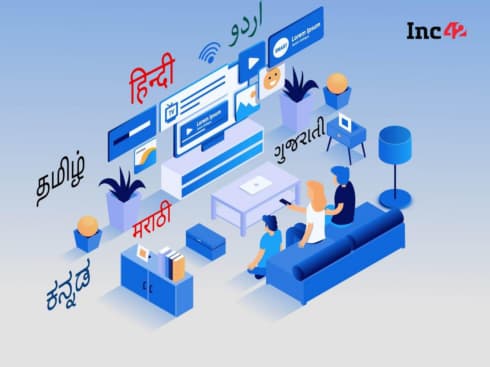
AI Has Become A Potential Disruptive Force In Legal Services Space
As per the National Judicial Data Grid, over 26 Mn cases are pending across all the Local, District and High Courts and the Hon’ble Supreme Court of India and close to 9% of these cases are pending over 10 years or more[1]. On average 30,000 cases are filed every day and roughly 28,000 cases are adjudicated daily.[1]
This means that there is a shortfall of 2,000 cases that are undecided, leading to a backlog of 7.3 lakh cases being added to the total cumulative backlog every year.
The backlog of cases falls within the purview of the administrative function of the judiciary. The solution to this seemingly perennial problem also involves an exponential increase in Executive funding for judicial infrastructure and court expansion.
For retaining the faith and promise of justice, it is imperative that the Executive branch and the Hon’ble Judiciary’s administrative branch act in good faith consensus to provide legal resolution to these cases, especially the ones pending for more than 10 years and those pending for more than 5 years.
Relevance Of Judgments In Legal Research
Lawyers in common law jurisdictions (India, UK, Canada, US, etc.) use case-law decided by the Higher judiciary (High Courts and The Hon’ble Supreme Court of India) as precedent in other subsequent cases of similar or identical circumstances. As a rule of judicial responsibility, Judges must follow the binding decisions of Superior or the same court [2].
Judgments which are oft-cited are known as “landmark” judgments and are disproportionately important to other judgments. Hon’ble Judges routinely mark their pronouncements as either “Reportable” or “Unreportable” depending on the relevancy and applicability of the legal principles contained within their verdicts to subsequent cases.
Lawyers, while arguing cases need to delve deep into legal research of hundreds of relevant cases and peruse thousands of pages of decisions to deduce the right cases that are in favour of their client’s motion or application. Lawyers also need to know the opposing view and the case-law justification that may be presented to back up the opposing view, so they can prepare a defensive mitigation strategy.
Evolution of Legal Research Industry In India
Legal research is an essential service for the smooth functioning of the legal services market, a $6.1 Bn size in 2011-12 [3]. Legal research for the reported or decided cases has been languishing in the era of ASP and .NET driven software for its perusal for lawyers.
Traditionally law journals in printed form would condense the “ratio decidendi” or legal ratio (summary) of the judgement and present it in a “headnote” with the corresponding paragraphs where the principle at law would be presented and the verdict would be espoused.
This analysis was laborious and requires the intense drafting by an experienced legal expert, well versed in legal proofreading, content comprehension and abstraction.
In the 1990’s and early 2000’s, the movement of electronic storage moved to CDs/DVD-ROM’s and law journal and other digital publishers moved to electronic media and sold database access on software that would run locally on the lawyer’s machine. Such software was static, required online updates through a manual process and did not have an automatic analysis or AI/Machine Learning.
The idea was to offer the google experience applied to a legal database on a local drive. This was more attuned to the idea of an e-book library transferred via encrypted files to the host computer. The User Interface and the software and database was however not attuned to the future needs and desires of legal practitioners and the changing dynamic of the technological landscape.
Nowadays, legal research tasks and summarisation processes have been delegated to computer programs and software such as Natural Language Processing (NLP) tools. Canadian researchers at the University of Montreal released an academic paper in 2004 wherein they described a methodology to create labelled data from legal judgments and then developed a system for automatic abstract summarisation.
According to extrinsic tests, such summarisation paradigms have an accuracy rate of roughly 90%, which is really good. Google released the source code of their NLP tool called TensorFlow which they use for generating Google news headlines from various text passages indexed from the news and other content sites.
New Startups And Innovation Using AI / Machine Learning
AI and machine learning-based platforms in consumer internet products such as Smart Assistants (Alexa, Siri, Ello, etc.) are slowly taking over traditional and static-digital modes of engaging consumers. According to a report Tata Consultancy Services (TCS), the largest software services company from India, 68% of Indian companies use AI for IT Functions, but 70% Believe AI’s Greatest Impact by 2020 – will be in Functions Outside of IT such as Marketing, Customer Service, Finance, and HR.
Also majority of the companies see AI as transformative and consider it significant to remaining competitive in 2020 [4]. The primary goal of all AI-enabled innovation is to minimize human labour and augment human capability to the maximum extent possible.
With the pace of innovation in Natural Language Processing increasing, AI has become a plausible and potential disruptive force in the legal services space. Even top legal firms such as Cyril Amarchand Mangaldas are now leveraging the power of AI for contract analysis and review [5]. The startup scene in the legal space started to heat up with the US investors turning their attention to startups such as RavelLaw and LexMachina.
The new-age legal research startups in the US are leveraging big-data analytics to advise on whether a case is winnable, sentiment analysis of judgment text to find the reasoning of Judges and the logical deduction of how a Judge might rule. Nearer to home, in India, startups have now started providing AI-enabled case-law research tools driven by summarisation algorithms coupled with machine-learning algorithms for ranking and showing the most relevant cases. Such tools help to inform lawyers on which cases are better suited to be cited in the Courts over others and also provide analytics on how the network of cases are inter-related.
AI’s Contribution To Human Productivity: Boon Or Bane?
The common misplaced notion that many lawyers and law firms have is that Artificial Intelligence or Machine Learning is a threat to their existence, or put simply, that AI is going to replace Lawyers. The evidence, from other industries and verticals such as ecommerce, healthcare and accounting is that AI/ML will only enable lawyers and law firms to do more with less, to become way more productive than their predecessors.
An associate or partner with a law firm who spends roughly 30-40% of her time on non-client (non-core) activities would now with the use of NLP/AI systems spend only 5-10% time in non-client activities. This ends up delivering an opportunity cost savings of roughly 25-30% for law firms, which has a multiplier effect across the entire talent roster.
My hope is that the use of NLP/AI would start from what is traditionally known as the “Bar” (the lawyers) and then extend itself to the “Bench” ( Hon’ble Judges) wherein even Judges could utilize the power of NLP Summarisation to gather the sum of the contentions of both sides, the appellant (petitioner) and the defendant (respondent). Judges could quickly deduce which part contains merit as per the Acts/Statutes and the latest case-law on the subject of law pertaining to the dispute.
While AI/NLP would be tools, the discretion, experience and knowledge of the human mind would be essential in adjudicating disputes, so Judges would remain an integral part of the system.
The question is not “Will AI /ML will replace professional in a wide range of industries?”, the question is “how are we going to use AI / ML to make ourselves more productive at work?”































 Ad-lite browsing experience
Ad-lite browsing experience